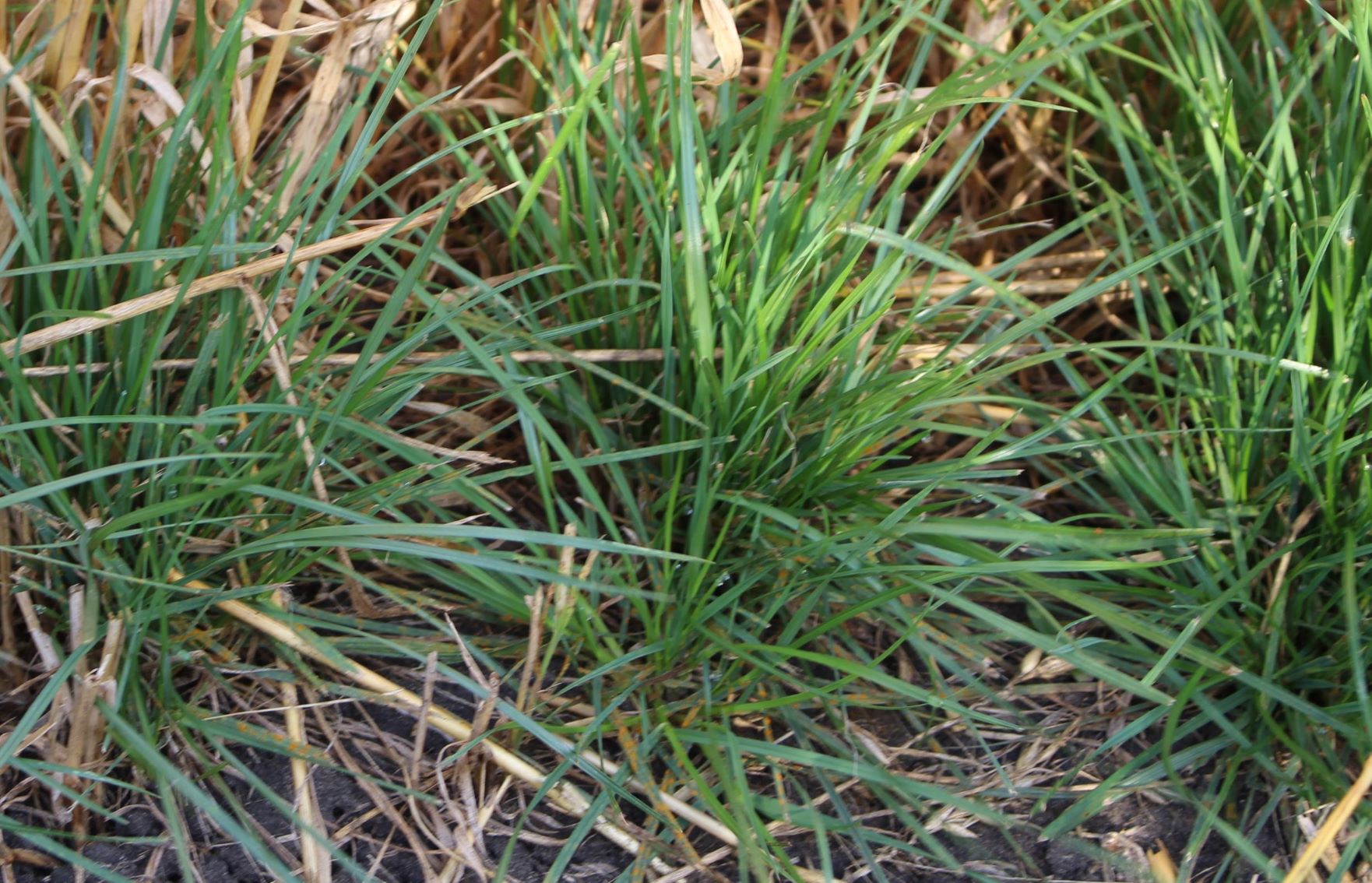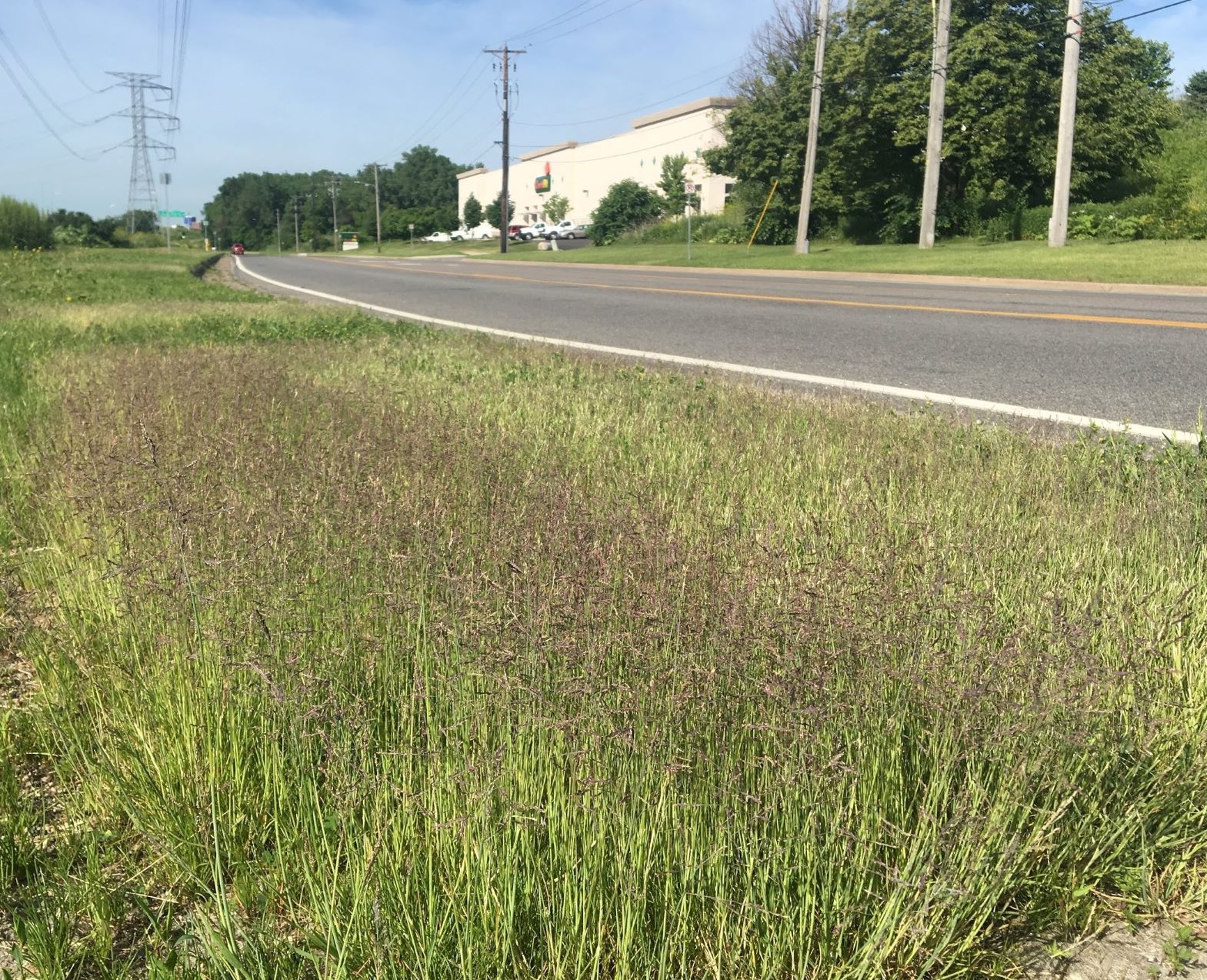By Dominic Christensen
Turfgrass species are often planted to revegetate roadsides after construction, especially in cities and urban areas. Their short-stature growth habit gives drivers better visibility than shrubs or trees. They can also function as a buffer strip to reduce pollutant loading, recharge groundwater, and reduce erosion, among other benefits (Beard & Green, 1994; Friell, Watkins, & Horgan, 2015). Mixtures of turfgrass species are often used because one species cannot tolerate every stress and certain species may be more suited in particular environments (Friell et al., 2015). Furthermore, planting mixtures of these species enhances the biodiversity and resilience of these systems. This article highlights the rationale for use of individual species along roadsides, their advantages, and disadvantages in Minnesota or in regions with a similar climate. These are the species currently being tested in the MnDOT regional mixture trial. Stay tuned for a future blog post highlighting general characteristics of other species along roadsides such as bluegrama, prairie junegrass, Canada bluegrass, and more!
Kentucky bluegrass
Rationale: To give roadsides a “front-lawn” look that is dense and aesthetically pleasing if well-maintained. Unfortunately, Kentucky bluegrass is the most popular and cheapest sod available and that translates to its overuse along roadsides.
| Advantages | Disadvantages |
|---|---|
|
|
Fine fescue
Rationale: For use on all types of roadsides as a low-maintenance grass that has medium tolerance to a variety of stresses. Arguably the most adapted group of short-stature species for use along roadsides. The term fine fescue < http://lowinputturf.umn.edu/ > refers to a group of five turfgrasses (strong creeping red fescue, slender creeping red fescue, hard fescue, sheep fescue, and Chewings fescue).
| Advantages | Disadvantages |
|---|---|
|
|
Perennial ryegrass
Rationale: Planted to reduce soil erosion quickly in highly erosive environments. Adapted as a cover crop to allow slower establishing species time to establish.
| Advantages | Disadvantages |
|---|---|
|
|
Alkaligrass
Rationale: Alkaligrass is tolerant to alkaline soils that experience significant salt from winter deicing practices. Its slower establishment and poor competitive ability in a mixture limits its persistence.
| Advantages | Disadvantages |
|---|---|
|
|
Tall fescue
Rationale: Tall fescue is commonly planted along roadsides in the transition zone of the United States (i.e. in the central United States). It was originally a forage grass and turf-type varieties offer some desirable characteristics for its use along roadsides.
| Advantages | Disadvantages |
|---|---|
|
|
Buffalograss
Rationale: Buffalograss is a warm-season native grass commonly found in the Great Plains. It grows together naturally with blue grama in the environment. It is highly adapted to low-maintenance environments. This species is only adapted for drier and warmer regions of Minnesota, such as southwestern and western Minnesota.
| Advantages | Disadvantages |
|---|---|
|
|
References
Alshammary, S. F., Qian, Y. L., & Wallner, S. J. (2004). Growth response of four turfgrass species to salinity. Agricultural Water Management, 66(2), 97–111. https://doi.org/10.1016/j.agwat.2003.11.002
Beard, J. B., & Green, R. L. (1994). The Role of Turfgrasses in Environmental Protection and Their Benefits to Humans. Journal of Environmental Quality, 23(3), 452–460. https://doi.org/10.2134/jeq1994.00472425002300030007x
Friell, J., Watkins, E., & Horgan, B. (2012). Salt tolerance of 75 cool-season turfgrasses for roadsides. Acta Agriculturae Scandinavica, Section B — Soil & Plant Science, 62(sup1), 44–52. https://doi.org/10.1080/09064710.2012.678381
Friell, J., Watkins, E., & Horgan, B. (2015). Cool-season turfgrass species mixtures for roadsides in Minnesota. Ecological Engineering, 84, 579–587. https://doi.org/10.1016/j.ecoleng.2015.09.057
Henensal, P., Arnal, G., & Puig, G. (1980). Research into the Establishment of Roadside Embankments. Proceedings of the Third International Turfgrass Research Conference, acsesspublicati(proceedingsofth3), 391–400. https://doi.org/10.2135/1974.proc3rdintlturfgrass.c45






